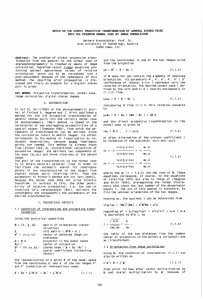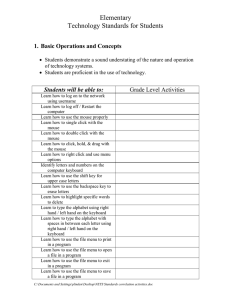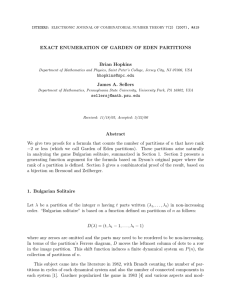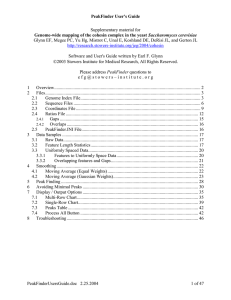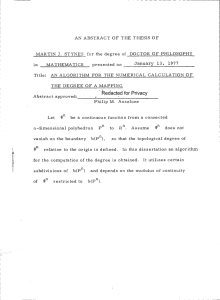Document 10614913
advertisement
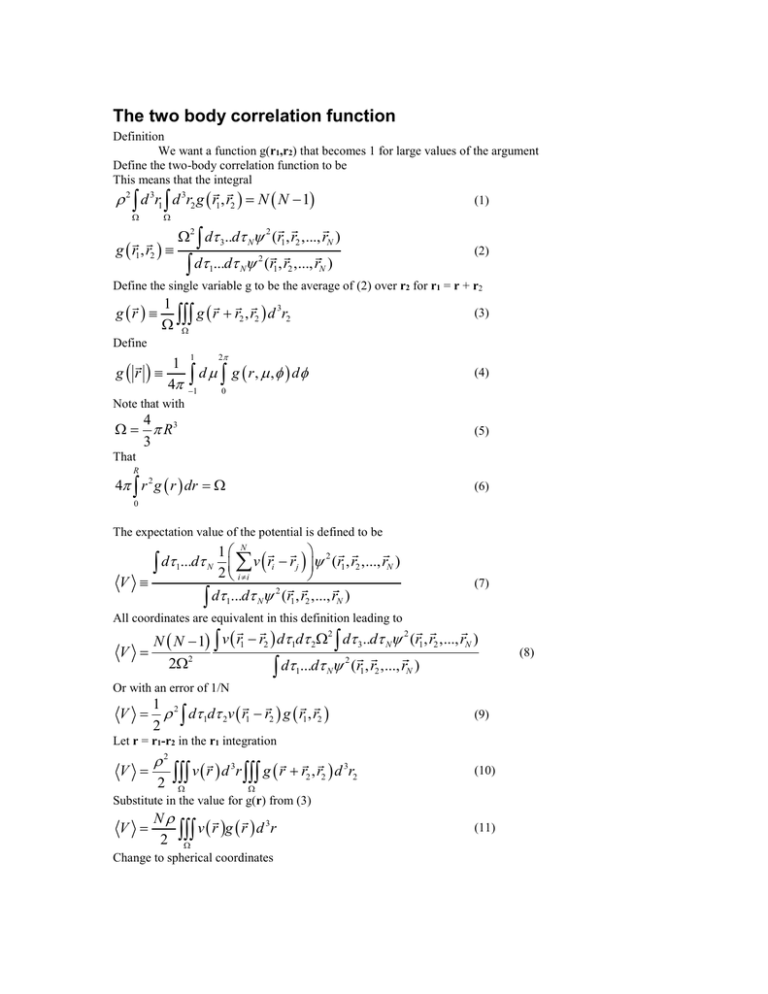
The two body correlation function Definition We want a function g(r1,r2) that becomes 1 for large values of the argument Define the two-body correlation function to be This means that the integral 2 d 3r1 d 3r2 g r1 , r2 N N 1 (1) g r1 , r2 2 d 3..d N 2 (r1 , r2 ,..., rN ) (2) 2 d1...d N (r1, r2 ,..., rN ) Define the single variable g to be the average of (2) over r2 for r1 = r + r2 g r 1 g r r2 , r2 d 3r2 (3) Define 1 g r 4 1 2 1 0 d g r , , d (4) Note that with 4 R3 3 (5) That R 4 r 2 g r dr (6) 0 The expectation value of the potential is defined to be 1 N d ... d v ri rj 2 (r1 , r2 ,..., rN ) 1 N 2 i i V 2 d1...d N (r1, r2 ,..., rN ) (7) All coordinates are equivalent in this definition leading to V 2 2 N N 1 v r1 r2 d1d 2 d 3..d N (r1, r2 ,..., rN ) 2 d1...d N (r1, r2 ,..., rN ) 22 Or with an error of 1/N V 1 2 d 1d 2v r1 r2 g r1 , r2 2 (9) Let r = r1-r2 in the r1 integration V 2 2 v r d r g r r , r d r 3 3 2 2 2 (10) Substitute in the value for g(r) from (3) V N v r g r d 3r 2 Change to spherical coordinates (11) (8) V N 4 2 r v r g r dr 2 0 R (12) Note that V is going as N2 so that this <V> is still large. This is because the g includes an N-1 from the fact that any of N-1 other particles could be next to particle 1. The two body correlations function is crudely related to the scattering function in IbachLuth.doc .htm. A prescription for finding g(r) using Monte Carlo methods is described in gofr2.doc.htm Contains HW 22 – an interesting exercise of medium difficulty.



